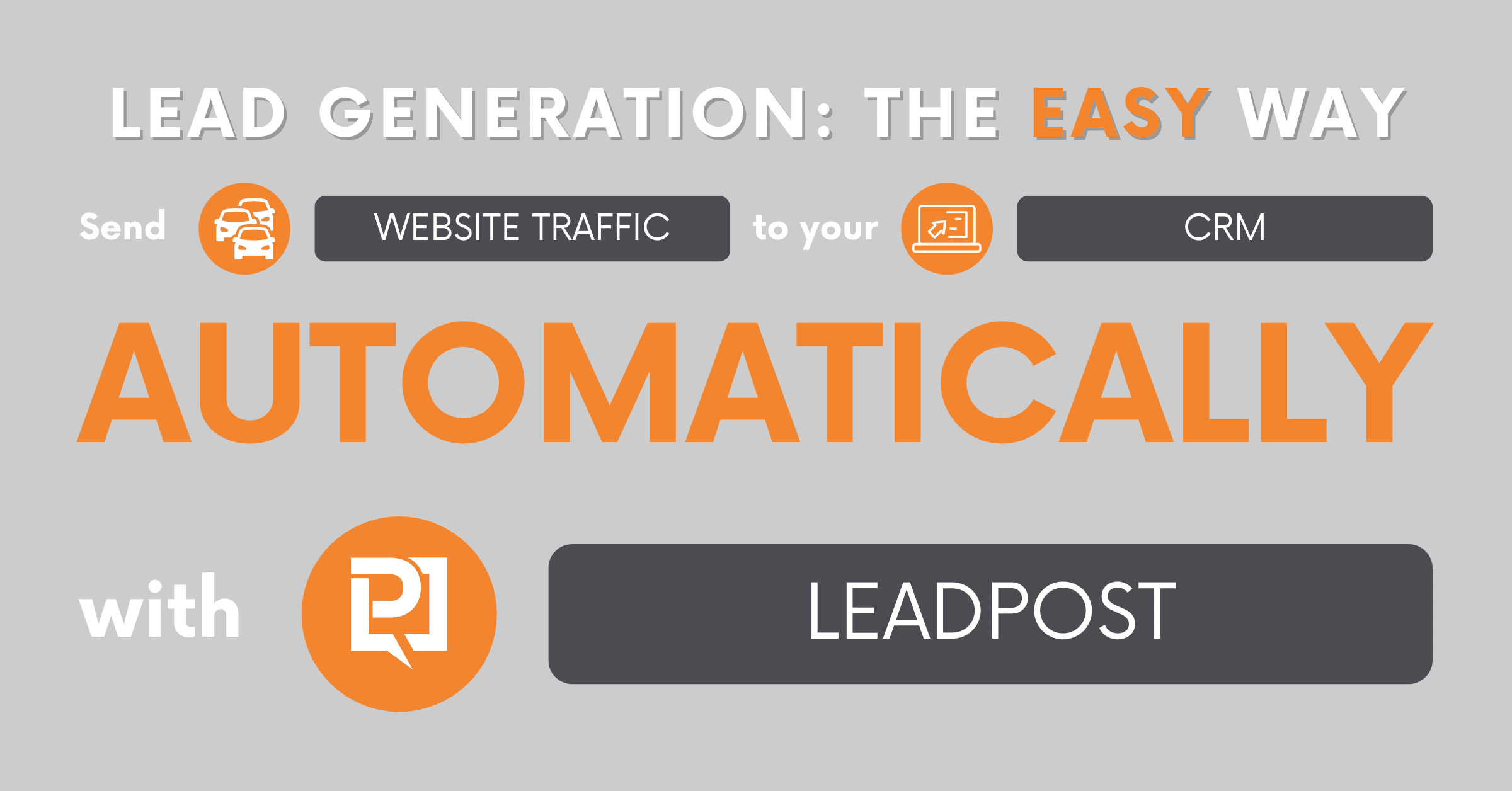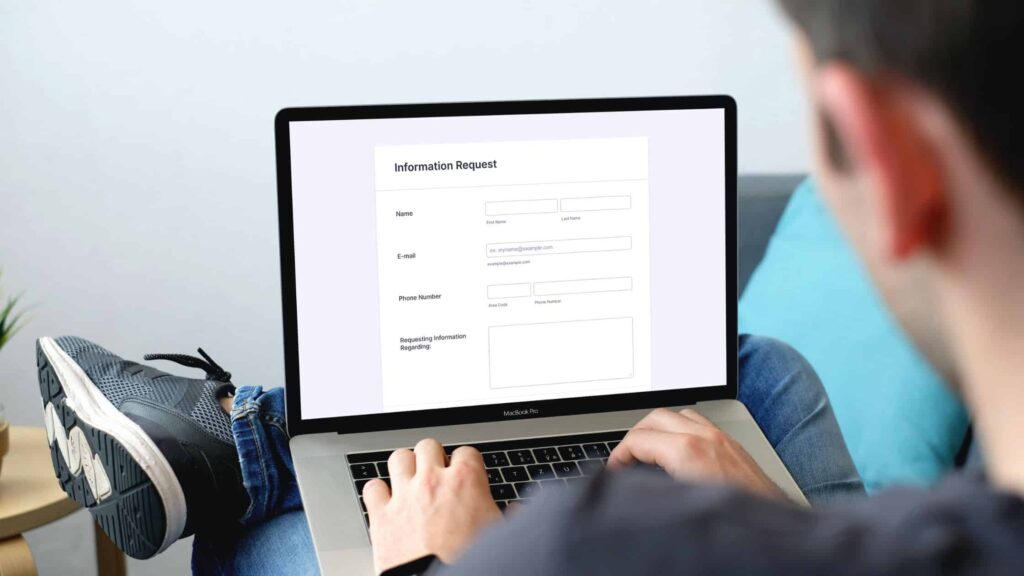There are two ways to generate B2C leads: the easy way and the hard way. There’s nothing wrong with the hard way. In fact, we recommend it. But there’s a simple step you can take to maximize the value you receive from the work you’re currently putting in.
What We’ll Cover in This Guide
There are ways to generate leads offline, and there are ways to buy leads. There are also B2C lead generation companies that will generate leads for you. We’re not going to cover those here.
Instead, this guide will explain how to generate leads online. First, we’ll cover the traditional B2C lead generation process: the hard way. Then, we’ll show you the easy way (and we’re not talking about hiring a lead generation company).
Both ways are important because neither will generate as many leads individually as they will when you combine them.
Generating B2C Leads the Hard Way
Implementation can be a challenge, but the idea behind lead generation is simple. There are people in the world who want your product, and you want to know who they are so you can sell it to them. Lead generation is the process by which you collect the information you need to do that.
The Nuts and Bolts of Lead Generation
As of this writing, there are 436 B2C lead generation products in Capterra’s Lead Generation Software category, but you only need four components to generate B2C leads.
- Website Traffic. To generate leads online, you need website visitors. You can get these visitors through paid traffic from digital advertising campaigns or organic traffic through channels like organic search or social media.
- Landing Pages. Your landing page is where you’ll send your traffic. Your landing pages can take different forms. For example, some of them might be blog posts. You might also use “squeeze” pages specifically designed to capture leads.
- Lead Magnets. A lead magnet is something that you offer to your website visitors in exchange for their contact information. It could be anything, as long as your website visitors perceive it to be valuable enough to justify handing over their email address, phone number, or whatever other information you need from your leads.
- Forms. Lead capture form software allows you to collect your website visitors’ information. They usually offer a way to deliver the lead magnet as well.
- A CRM. Your CRM is where you’ll store your leads for further follow-up.
As you can see, while B2C lead generation may not be easy, it is simple. The hard part is putting the pieces together in a way that persuades visitors to submit the form.
Try our B2C lead generation tool to see just how easy lead gen can be!

Building a Basic Lead Generation Funnel
Wondering how to generate more leads? We’ve got you covered! This article lists all the ingredients you’ll need to cook up some B2C leads.
But first, let’s talk about the recipe. To generate leads, you’ll need these components for your eCommerce marketing campaigns.
Step 1: Choose a Lead Magnet
You can offer anything of value as a lead magnet. It could be something physical, like a free sample, or something intangible, like an ebook that’s relevant to your product.
Some people will give you a throwaway email to take advantage of the offer without giving you a way to contact them. That’s not good because the main point of the exercise is to grow your email list.
You can discourage throwaway emails by offering something that requires regular email contact. For example, suppose you have a newsletter with exclusive discounts. In that case, visitors will have to give you their actual email address to receive the value you’re offering.
Step 2: Create a Landing Page
Your landing page will include the content necessary to persuade visitors that you’ve got a resource worth downloading. If you don’t know how to create a landing page, here are three options that don’t require a designer:
- Some email service providers come with landing page builders (along with forms and, of course, email), so if you don’t have a website, that’s something to consider.
- If you don’t want to be restricted by the limiting styling options you’ll find along that route, there are also standalone landing page builders. Standalone landing page builders are explicitly designed to make it simple to create and style webpages for lead generation.
- If you use a CMS like WordPress, some themes and plugins include landing page templates.
However you build your landing pages, there are six elements to include:
- A headline. Someone said the goal of each line of copy you write is to make your reader want to read the following line. Your headline should grab your visitor’s attention and call out the value your lead magnet will deliver.
- A subheading. Underneath your headline, define your unique selling proposition. You want to “sell” your visitor a resource in exchange for their contact information. Why should they give it to you? Is it a white paper with research they can’t find anywhere else? The only free ebook written by an industry expert? Whatever your unique selling proposition is, put it under the headline.
- Persuasive copy. Remember, each line should motivate your visitors to read the following line. Tell them what you’re offering, what makes you or your company uniquely suited to offer it. Explain why it’s valuable—focus on benefits, not features—and address any objections or reservations your readers might have.
- Social proof. Just as consumers consider other people’s opinions when they’re unsure about a purchasing decision,[1] visitors to your landing page will be influenced by social proof. So include testimonials or reviews to make the decision easier. Use testimonials from people who are similar to the people in your target audience. Visitors who match your ideal customer profile will be more likely to download your resource if they see that people like them have already done it.[2]
- Form. This one is important to get right. Of course, you need a lead capture form. A landing page without a form is like a store without an entrance. And a form with too many fields is like a store on the third floor of a building with no elevator. So don’t ask for more information than you need. You need to get at least enough information to deliver the lead magnet (e.g., an email address for discount alerts or a mailing address for a free product). But avoid asking for too many additional pieces of information. Don’t worry! We’ll show you how to get the rest of that data when we talk about the easy way to do B2C lead generation.
- Call-to-action. Don’t leave visitors wondering what to do next! Include a clear call-to-action inside the button.
Step 3. Drive Traffic to Your Website
Now, you’re ready to fill your funnel with B2C leads. Any source of traffic will do. But if you decide to use digital advertising campaigns as part of your B2C lead generation strategy, track your results. That way, you can see if the leads you’re generating drive enough sales revenue to be worth the cost.
Generating B2C Leads the Easy Way
After your landing page begins to receive traffic, you’ll notice a sad fact about lead generation: most people don’t convert. That’s not a surprise. We’re sure you didn’t expect to have a 100% conversion rate.
But, if you’re like most people, you’ll probably find that 9 out of 10 people don’t convert. And, since you’ll keep your forms as short as possible, there will be some valuable data (e.g., net worth or household income range) that you won’t get.
That’s where the easy way comes in.
The easy way to do B2C lead generation is called website visitor identification.
What is Website Visitor Identification?
Website visitor identification uses third-party data and tracking technologies to provide verified email and mailing addresses for up to 40% of your anonymous website visitors. If you use a platform like LeadPost, this method of B2C lead generation is compliant with existing privacy laws.
Generating B2C Leads the Easy Way
After your landing page begins to receive traffic, you’ll notice a sad fact about lead generation: most people don’t convert. That’s not a surprise. We’re sure you didn’t expect to have a 100% conversion rate.
But, if you’re like most people, you’ll probably find that 9 out of 10 people don’t convert. And, since you’ll keep your forms as short as possible, there will be some valuable data (e.g., net worth or household income range) that you won’t get.
That’s where the easy way comes in.
The easy way to do B2C lead generation is called website visitor identification.
What is Website Visitor Identification?
Website visitor identification uses third-party data and tracking technologies to provide verified email and mailing addresses for up to 40% of your anonymous website visitors. If you use a platform like LeadPost, this method of B2C lead generation is compliant with existing privacy laws.
How to Generate B2C Leads With LeadPost
Once you sign up for an account, generating leads the easy way is—well, it’s easy. Just like it says on the box. Here’s how it works.
Step 1. Add the LeadPost Pixel to Your Website.
This pixel is how LeadPost matches your visitors with their contact information.
Step 2. Create a Campaign.
When you create your campaign, you’ll be able to:
- Choose how long you want to collect the data.
- Add anyone whose data you don’t want to collect (e.g., existing customers).
- Set up geofilters if you only want to collect data from people in specific regions of the US.
- Choose additional information to collect (e.g., automotive data and presence of children).
- Set your budget.
The leads you generate through LeadPost are yours. You can:
- export them to a spreadsheet,
- use LeadPost’s third-party integrations to send them to your CRM or an ad platform,
- or run remarketing campaigns from within the LeadPost platform.
- use the data to improve your lead scoring model.
Try the Easy Way for Free
When you’re ready to do B2C lead generation the easy way, sign up for a free trial. Then you can see just how easy it can be.

[1] Wooten, D; Reed II, A (1 January 1998). “Informational Influence and the Ambiguity of Product Experience: Order Effects on the Weighting of Evidence.” Journal of Consumer Psychology. 7 (1): 79–99. doi:10.1207/s15327663jcp0701_04
[2] Cialdini, Robert B. (October 2001). “Harnessing the science of persuasion.” Harvard Business Review. 79 (9): 72–79.
